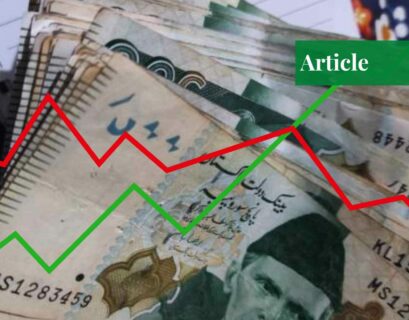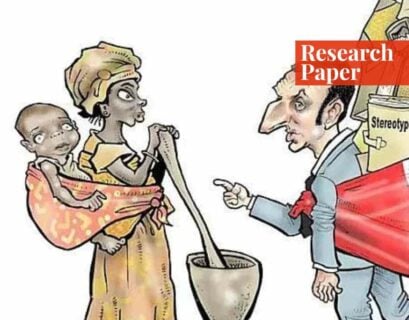Introduction
Since the Second World War, approximately 72 civil wars have been fought, of which 30 ongoing conflicts exist worldwide, according to a survey carried out by the Stockholm International Peace Research Institute. A data collection by Singer and Small revealed that civil war is a war within the boundaries of a country, killing at least 1,000 people each year. Countries like Iraq, Syria, Afghanistan, and Sierra Leone are marred with large-scale crises, ranging from contentious politics, and debilitating economies to civil war.
In the international arena, civil wars continue to be a devastating phenomenon (Eikenberry & Krasner, 2017). Civil wars have claimed more than 20 million lives since 1945 and the causalities are still counting. Comprehending the causes of civil, or intra-state wars that ensue massive human destruction and loss of infrastructure, is undoubtedly the most pertinent matter of the current world order. Therefore, we use the greed and grievance theory to understand the motivations behind a civil war.
A civil war ignition through the lens of the greed and grievance theory suggests that rivals in conflicts are driven by greed or opportunistic factors, such as vying for another source of income or desire to attain more, and they weigh the probable rewards against the risks and costs of getting involved in a conflict. On the other hand, grievance postulates that people fight over problems such as racial, ethnic, religious, or gender discrimination, authoritarianism, injustice, identity issues, or inequality in various aspects (Saygi, 2020).
But, is this theory applicable towards understanding the causes of a civil war or is greed defended more than grievance? Is it relevant to the civil mayhem in Sierra Leone from 1991 to 2002? This “new war era” has further blurred the line between the struggle for political and economic gains and using aggressiveness for personal benefits.
The greed and grievance theory applies well to the case of civil war in Sierra Leone as the conflict can be explained using both. There are multi-dimensional factors triggering the war comprising elements of both “greed” and “grievance.” One perpetuates the other. However, my stance is that even though the conflict in Sierra Leone was due to political tyranny, the thirst for taking control of Sierra Leone’s treasured diamonds was the biggest driver of the conflict. Therefore, the greed element, as explained by Paul Collier and Anke Hoeffler’s take on the theory, is more convincing in comprehending the cause of the conflict in Sierra Leone’s case (Naguib, 2015).
Greed and Grievance Theory
The greed and grievance theory seeks to explain the cause of civil war through two opposing arguments. But the commonality is no matter what might cause a conflict, there is some form of deprivation. If the deprivation occurs in economic form, that inequality will be referred to as vertical inequality. This argument now encompasses other types of wars too, such as general violent conflict, terrorism, and insurgency.
Since this theory is based mainly on econometric and statistical interpretations, the greed argument argues that combatants try to ameliorate their situation and perform a cost-benefit analysis to figure out whether they would gain rewards after joining a rebellion or not and earn an economic gain. A grievance argument means that a conflict is incited over problems of identity such as ethnicity, class hierarchy, religion, race, or deprivation of political rights. It is also called horizontal inequality.
Paul Collier and Anke Hoeffler are of the view that most civil wars are not caused by grievances, rather, the ulterior motive of the rebellion is greed. The grievances voiced by the rebels come from their economic agendas, they prefer to hide them under the cover of being marginalized, and discriminated against socially, politically, and racially. (Hoth & Mengal, 2016). Moreover, the economic inequality further creates grievances as people feel like their opportunities have been stripped away, causing the diaspora to finance the civil war.
The Collier-Hoeffler model and the greed and grievance theory both investigate the onset of civil war and rebellion in terms of opportunity and motive. The only way they differ is that the Collier-Hoeffler model’s main focus is on opportunity (greed) as the driver of rebellion. While the broader greed and grievance theory is more inclusive in its principles, it postulates that both opportunity (greed) and motive (grievance) can coexist and ignite a civil war.
The greed and grievance model uses measurable variables to differentiate between motive and opportunity. The rational choice approach provides the basis for this model, and various proxy variables operationalize this model. The below table shows the opportunities for a rebel alongside the grievances that compel them to start a conflict (Real P. Sousa, 2016). It is important to elaborate on each of these elements.
| Opportunity Factor | Description |
| Funding possibilities | – Revenues from natural resources – Remittances from diasporas – Support from hostile governments |
| Recruitment costs | – Determined by alternative income levels – Recruitment costs of fighters are low |
| War capital | Accumulated resources and capabilities from previous conflicts |
| The government’s territory control | – Terrain suitability for rebels (forest, mountains, etc.) – Population dispersion makes control easier |
| Military advantage | Military advantage as there is diverse population and war capital present in the country |
| Economic benefits | Availability of natural resources such as oil, diamonds, etc. |
| Social cohesion | Influence of ethnic and religious factors on establishing and maintaining conflict groups |
The table above presents the key factors that contribute to the “greed” aspect of the model, focusing on the economic opportunities and motivations behind the initiation of civil wars.
| Grievance Factor | Description |
| Religious and ethnic Hatred | Tensions and animosities between religious and ethnic groups |
| Political repression | Level of government suppression and control |
| Political exclusion | Exclusion of certain groups from political participation |
| Income inequality | Disparity in income distribution in the country |
This table outlines the factors that contribute to the “grievance” aspect of the model, focusing on the social and political motives behind the initiation of civil wars. This model was used to analyze the civil wars from 1960 to 1999 and it was revealed that the greed element was the one that was considered as the primary motivation behind a civil war. However, it is noteworthy that causes of conflict can operate beyond rational designs (Sousa, 2016). Relative deprivation, as a theory of grievance-based rebellion, denotes that there is always some type of deprivation that compels the rebels to stir conflict in an area
Collier and Hoeffler end with the notion that the abundance of resources in weak and poor states, as well as their scantiness, mostly contributed to the war. However, Collier also claims that countries that rely on exports have a greater probability of engaging in conflicts. Furthermore, societies comprised of multiple ethnicities and a huge younger population are more likely to engage in civil wars. Collier does not recognize any mathematical link between inequality and conflict. His findings reveal the significance of economic agendas rather than grievance. Examples of resource-rich countries such as Biafra in Nigeria, Aceh in Indonesia, and Cabinda in Angola justify the greed theory that economic factors were the reason behind civil wars in these regions (Hoth & Mengal, 2016).
Civil War in Sierra Leone
The African continent is abundant with natural resources but this wealth has never been a blessing for it. Africa grapples with a resource curse that has long been acting as an obstacle in the way of development. The same has been the case with one of its resource-rich countries, Sierra Leone. The civil war in Sierra Leone—regarded as the bloodiest civil war—took place from March 1991 to 2002, killing more than 70,000 people (UNDP estimates).

This 10-year war began when a loose coalition of African youngsters in Sierra Leone formed the Revolutionary United Front (RUF) under the leadership of Foday Sankoh. Sankoh was backed by the Liberian rebel head, “Charles Taylor,” and his coalition known as the National Patriotic Front of Liberia, who were sold diamonds in return for weapons. Their motive was to rebel against the dictatorship of the Sierra Leonean government. This war was driven by wealth from diamonds, whose mines were situated in the east of the country. RUF exercised a strong hold over this region and used these diamonds to fund the war.
Apparently, RUF was formed to counter the political elite of the country, however, Foday Sankoh’s policies implied that he wanted to take over Sierra Leone’s resource wealth. Moreover, RUF’s army was made up of kidnapped children. These children were then put on drugs and intoxicated, making them helpless and unlikely to be helped by anyone but RUF. The Sierra Leone Army (SLA) was flawed in its role and failed to defeat the RUF. The soldiers of SLA were unfaithful to their army as they swayed between the RUF and the SLA. They even caused mayhem in society, such as abducting women and pillaging resources (Amherst, 2008).
By 1995, the conflict had spread to the north and south. Military coups had changed the leadership of the Sierra Leone government five times. In 1991, ECOMOG – a Nigerian-led intervention force – came to the surface to wipe out the Revolutionary United Front to establish rule in the capital, Freetown. Meanwhile, when the Lome Peace Treaty was signed in 1999, promising the rebel leaders to be positioned in government, United Nations peacekeeping missions began coming to Sierra Leone. But RUF held them hostage and furthered the intensity of attacks to drive these peacekeepers out of their area of control.
The situation in Sierra Leone kept deteriorating until, in May 2000, the British army plunged into protecting the Freetown airbase and fighting back the forces, disarming 40,000 rebels while backing the government. The British forces remained stationed until 2002, when the civil conflict officially ended. The year 2002 saw peaceful elections, and most importantly, the War Crimes Tribunal was formed by the UN. The igniter, Sankoh, died while anticipating his trial. The ex-rebels were officially disarmed and rehabilitated in 2004. The conflict provides a pertinent example that fits well into the greed and grievance theory, with the exploitation of diamonds being the greed that led to the war, while grievances such as political and social marginalization incited the war. Both greed and grievance recognize potential motivations for the violence inflicted by the Revolutionary United Front.
Linking the Civil War in Sierra Leone & the Theory
The theory of greed and grievance applies well to the case of the civil war in Sierra Leone. Sierra Leone’s example can be analyzed through the perspective of greed and grievance. Greed and grievance elements were entwined in multifarious ways in the context of the civil war in Sierra Leone. The desire to take over the diamond reserves attracted rebels to exploit them and source their activities, giving it the name of the “diamond curse.” The struggle of rebels to attain economic benefits through the exploitation of diamonds led to civil war. On the other hand, this example fulfills the part of the grievance as well since there was an imbalanced distribution of power and wealth, alongside zero representation and marginalization, leading to the conflict of 1991.
The postulates of this theory explain the cause of war in Sierra Leone as being resource-rich, as it had several diamond mines that provided them with funding and a source to buy weaponry, coming under the heading of “greed.” The same has been said by Ibrahim Kamara that the root cause of the conflict will always remain diamonds. The grievance can be seen from the time of British colonial rule since 1787, when flawed bureaucracy had marginalized the youth of Sierra Leone, depriving them of education rights. This weakness in governance led to political and social grievances against the leadership.

Under this rule, chiefs were made the heads who usurped the rights of the people, ranging from religious to social. These chiefs had immense power and that scenario came to be known as “decentralized despotism.” Moreover, there was a lack of representation of the citizens, social inequality, and rampant corruption that became the cause of the war (Jang, 2012).
Analysis
The case of Sierra Leone reveals that greed outweighs grievance as the reason behind the eruption of the conflict. The diamond mines were located in war zones, which gave rebels the edge to easily access them and use them for sourcing ammunition. The noticeable rise in the nature of self-financing in civil conflicts highlights the growing significance of economic indicators. Not just the rebels, but the Sierra Leonean president also satisfied himself with illegitimate pacts and dealings based on diamond reserves.
Even the grievance factors have greedy underpinnings. The persisting civil war in the region provided the combatants with an alternative source of profit and power. Moreover, the aim of the Revolutionary United Front was to capture the profitable diamond-producing country, which is clearly greed-based violence. Though marginalization, ethnic tensions, and a lack of political and social spheres existed in the state, greed outweighed them when gauging the contributors to the war.
Moreover, there were proliferating criminal gangs in the region, all vying for diamonds. The movie “Blood Diamond,” starring Leonardo Di Caprio, testifies that diamonds were the sole reason why the civil war broke out, along with the exploitation of children to maximize profits. Not only did the combatants in Sierra Leone vie for diamonds, but neighboring countries and other countries also took advantage of their diamonds. For instance, 2.6 million carats at $96 each carat were exported to Belgium. In Congo, diamonds were presented as gifts to whoever conquered areas where they would be found. Therefore, the greed theory proves to be more pertinent to the example of Sierra Leone (Naguib, 2015).
Preventive Measures for Sierra Leone
The diamonds present in Sierra Leone will remain a valuable natural asset while also being a lootable resource for rebels, putting the country in a resource curse. To prevent future civil conflicts arising due to diamond mines, there are a few measures that must be imposed so that diamonds for Sierra Leone can be a source of development and security.
The variables that incite the greed-based rebellion must be addressed. Sierra Leone needs a strategy that seeks to protect the interests of locals as well as leaders so diamonds can be lawfully, yet sustainably, traded and mined. Regulating the mine setup will ensure an equal proportion of profits among the shareholders, mitigating feelings of economic deprivation—the biggest reason for any civil war.
Sierra Leone needs licensing for mining, such as the Mines and Minerals Act 1994, to be put in place with stricter measures, preferably involving the national and international community. The extraction of diamonds needs to be done by skilled labor without making children a part of the labor force. Since the end of the civil war, imbalances in the hierarchy of political structures should be mitigated so that disparity of power and clash of interests between locals and chiefs do not arise. This should be executed by giving equal representation to every sector (Maconachie & Binns, 2007).
Conclusion
The greed and grievance theory explains the causes of a rebellion, provides a statistical examination of civil war, and points to a myriad of variables that determine whether greed or grievance precipitates the war. Although a lot of attention is placed on ethnicity and inequality being the drivers of it, not much evidence is available to support these claims. The only evidence related to the onset of any civil war present in the annals of history is a thirst for economic opportunities, higher income, an abundance of resources, and a history marred with wars. Therefore, greed is a useful concept in countering the trials of security and development.
The findings of Collier and Hoeffler’s work claim that rebellions are mostly motivated by greed. As contemplated in the case of civil war in Sierra Leone, the conflict mainly revolved around greed and economic gains. Blood diamonds, as defined by the United Nations, were diamonds that were illegitimately extracted in Sierra Leone by the forces, who sold them for their military activities. These rebel forces were driven by their desire of greed for diamonds and opportunity, ultimately resulting in one of the most brutal wars in Africa.
This greed for diamonds not only provoked the conflict but also threw Sierra Leone down in the Human Development Index. Sierra Leone is slowly recovering since the war in 2002. Succinctly, it has been proven that greed and grievance both play a significant role in inciting a conflict but it is for economic gains that most civil wars in the world have taken place.
References
- Amherst, U.O. (2008). Sierra Leone 1991-2001. Political Economy Research Institute, 1.
- Eikenberry, K. W., & Krasner, S. D. (2017, Fall). Civil Wars & Global Disorder: Threats & Opportunities. Daedalus. https://www.amacad.org/daedalus/civil-wars-global-disorder-threats-opportunities
- Hafeez, A. (2024, April 27). Zombie drug crisis in Sierra Leone. Paradigm Shift. https://www.paradigmshift.com.pk/drug-crisis-in-sierra-leone/
- Hoth, M. D., & Mengal, S. (2016). Greed versus grievance debate: Highlighting its empirical, theoretical foundations and applicability to the study of conflicts. Journal of Law and Society, 94.
- Jang, S. Y. (2012, October 25). The Causes of the Sierra Leone Civil War. e-IR https://www.e-ir.info/2012/10/25/the-causes-of-the-sierra-leone-civil-war-underlying-grievances-and-the-role-of-the-revolutionary-united-front/
- Maconachie, R., & Binns, T. (2007). Beyond greed and grievance in Sierra Leone. De Gruyter, 172-173.
- Naguib, R. (2015). Greed and Grievance in Sierra Leone. Arete, 1-2.
- Sousa, R.P. (2016). Greed, grievance, leadership and external interventions in the initiation and intensification of the civil war in Angola. e-journal of International Relations, 74-75.
- Saygi, M. K. (2020, January 22). The Political Economy of Conflict: Greed versus Grievance.
If you want to submit your articles and/or research papers, please check the Submissions page.
The views and opinions expressed in this article/paper are the author’s own and do not necessarily reflect the editorial position of Paradigm Shift.


















